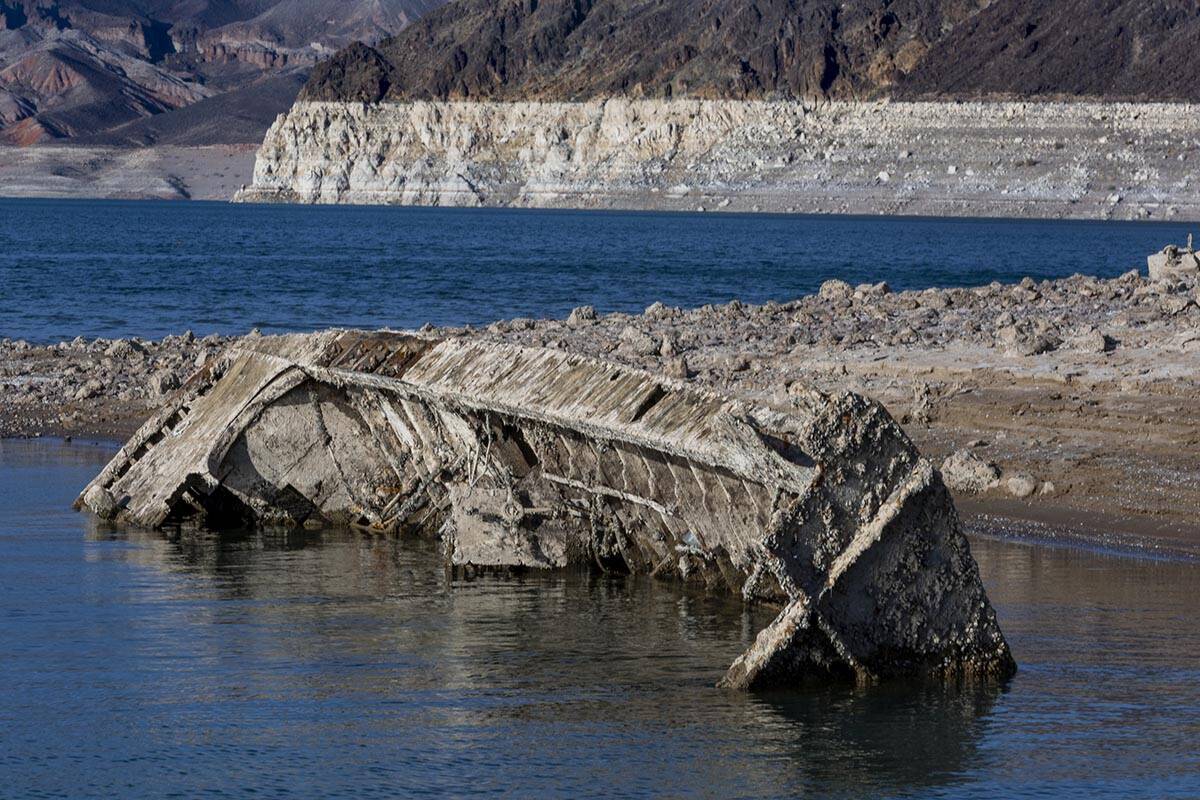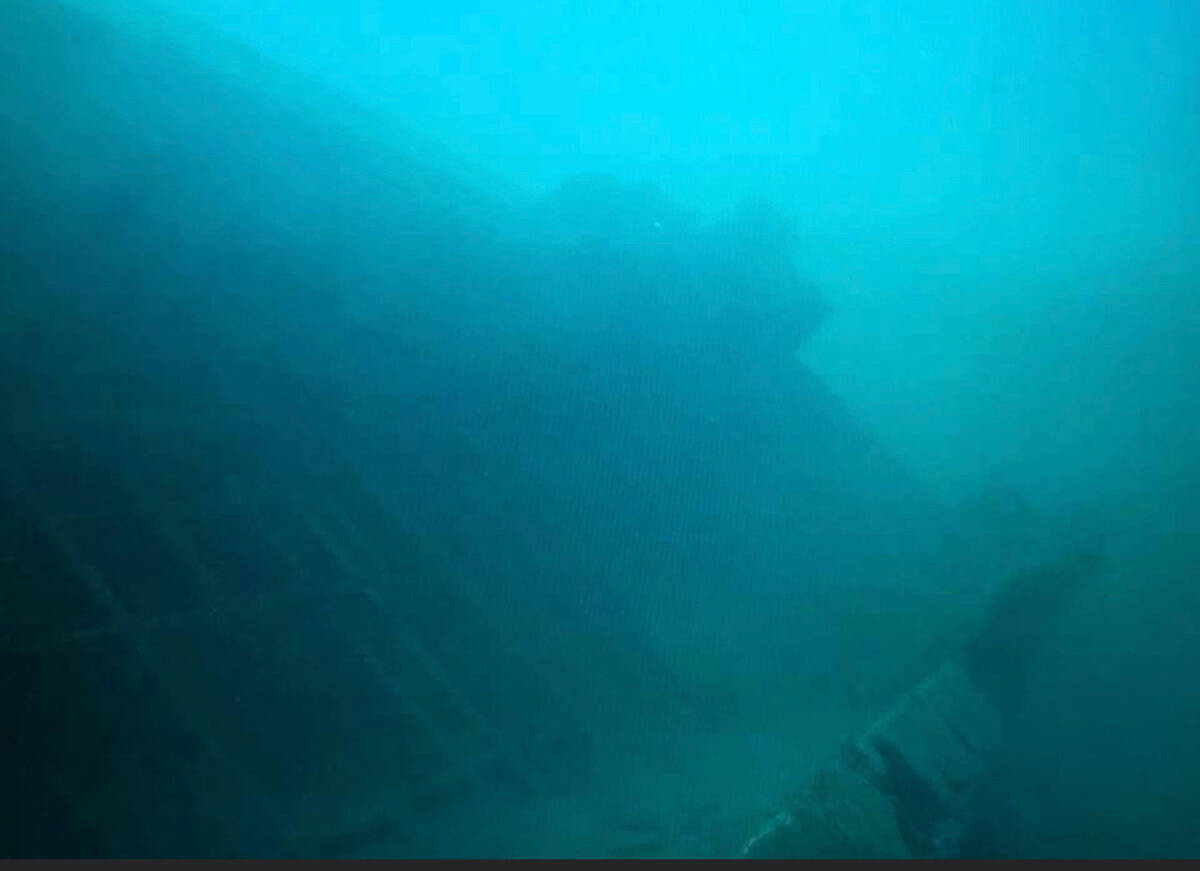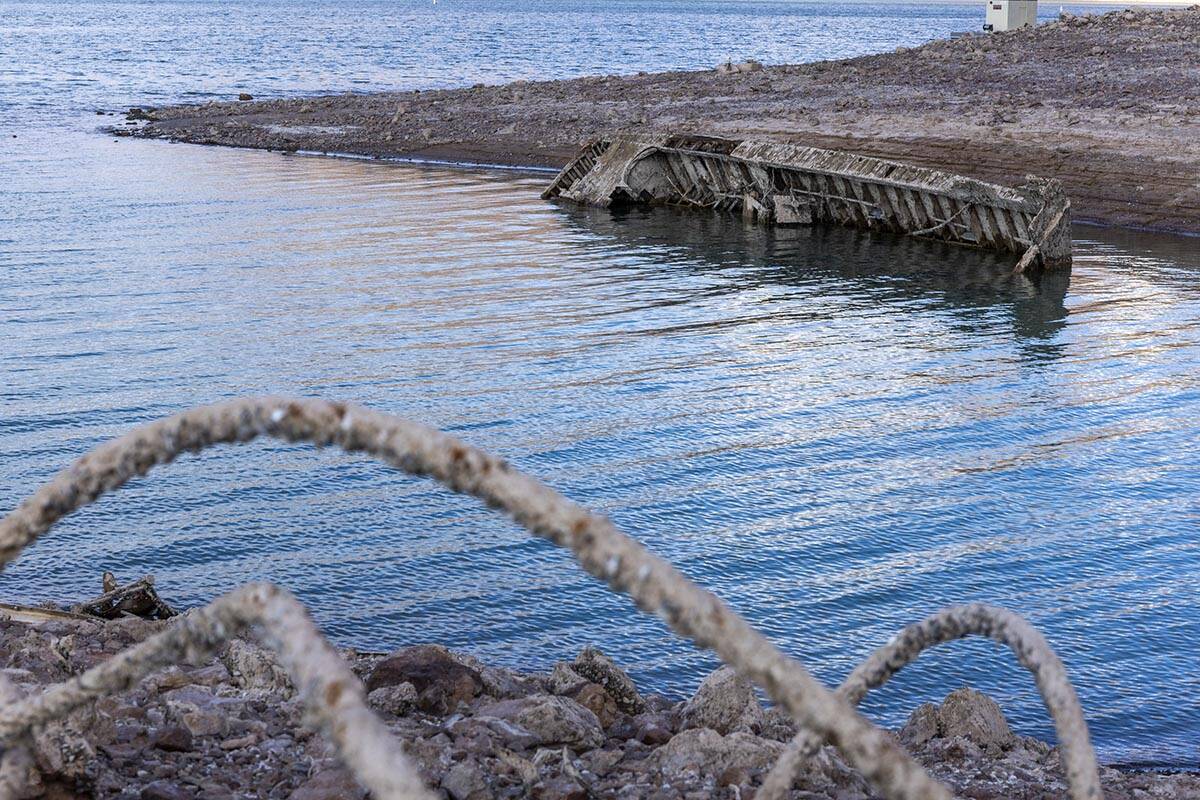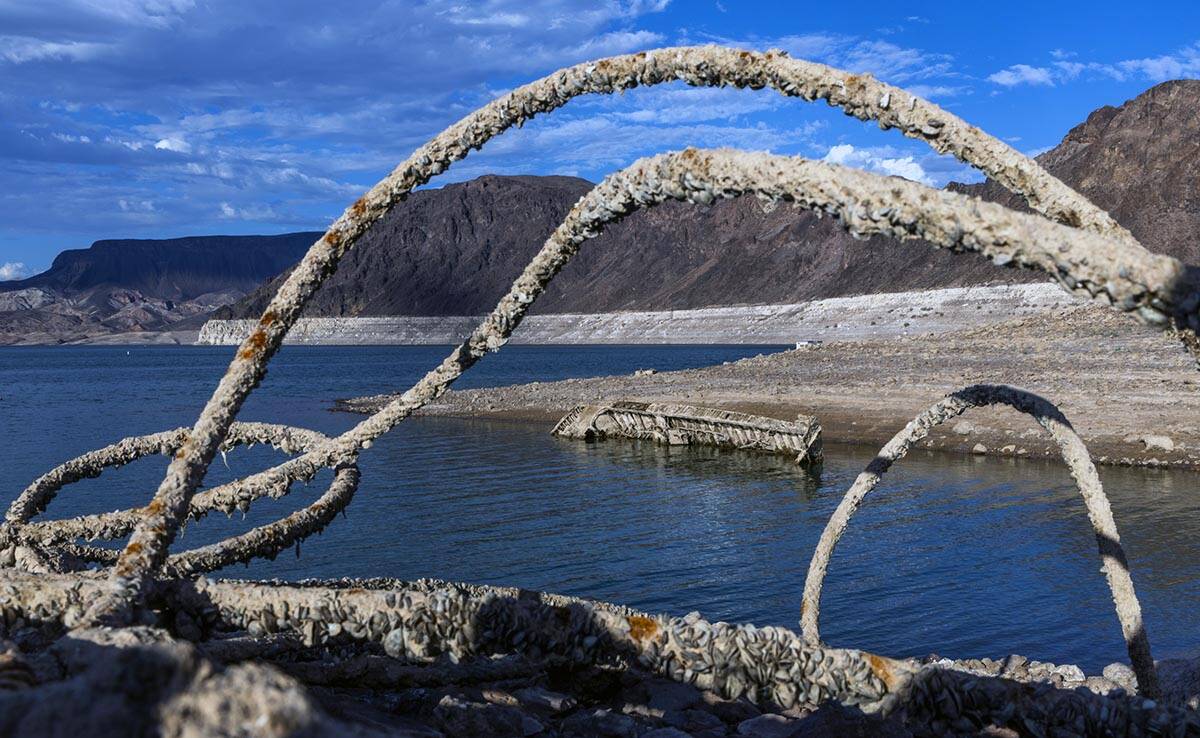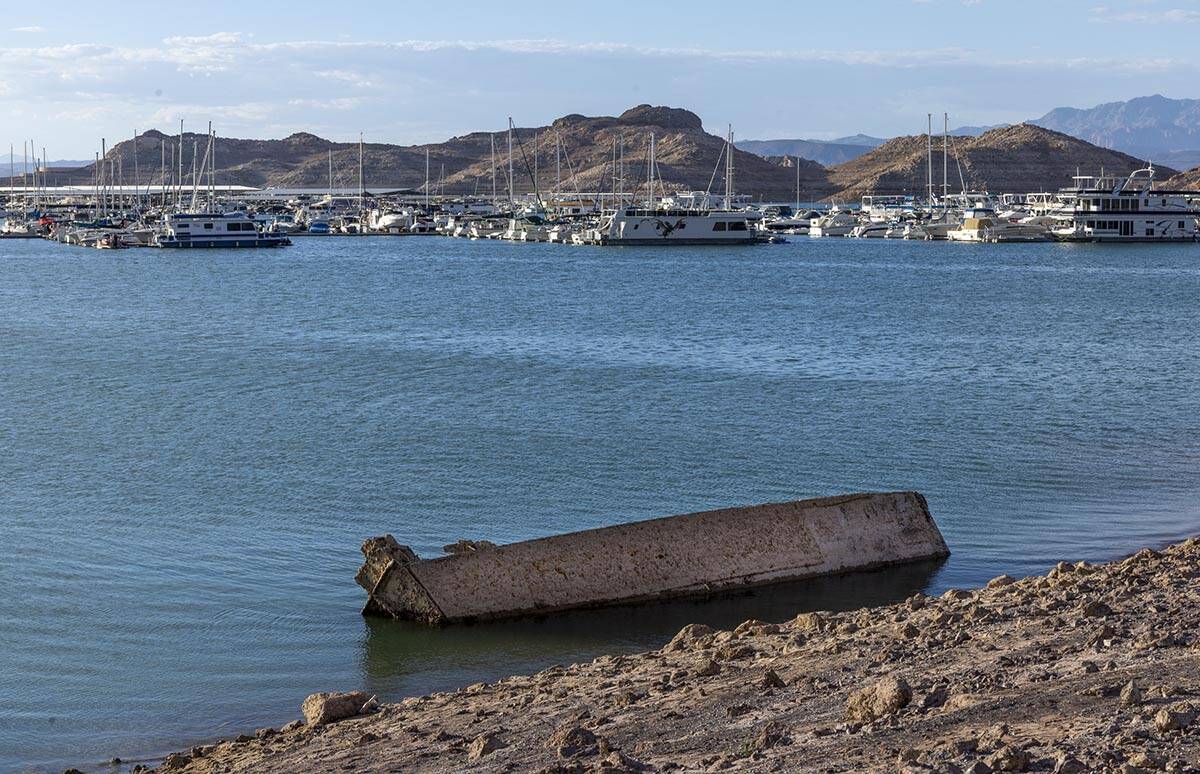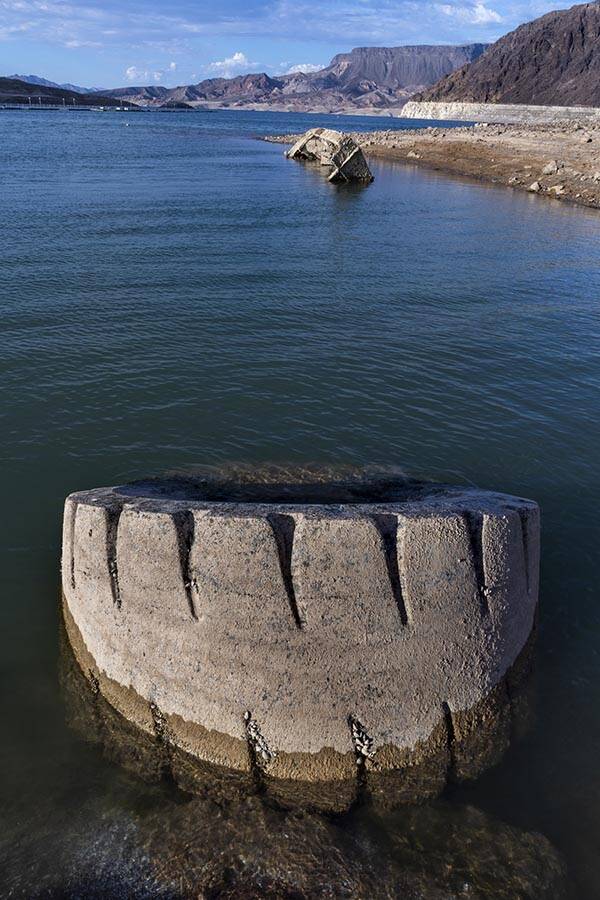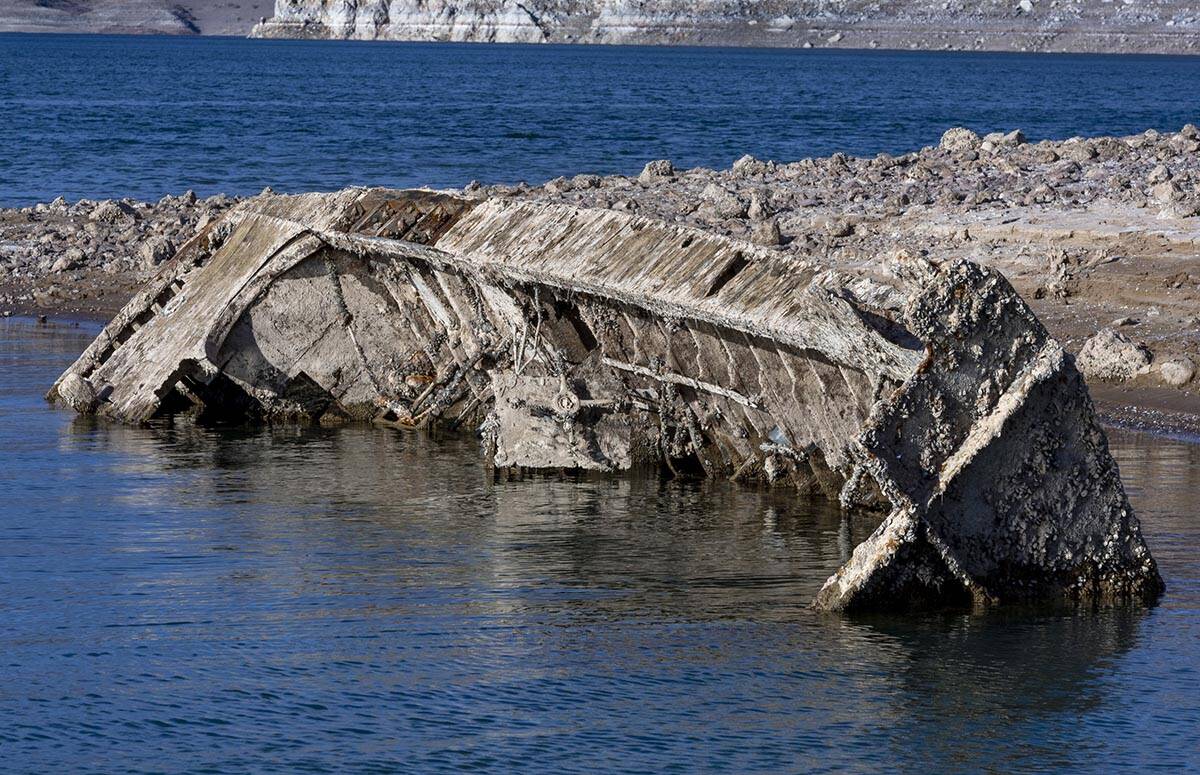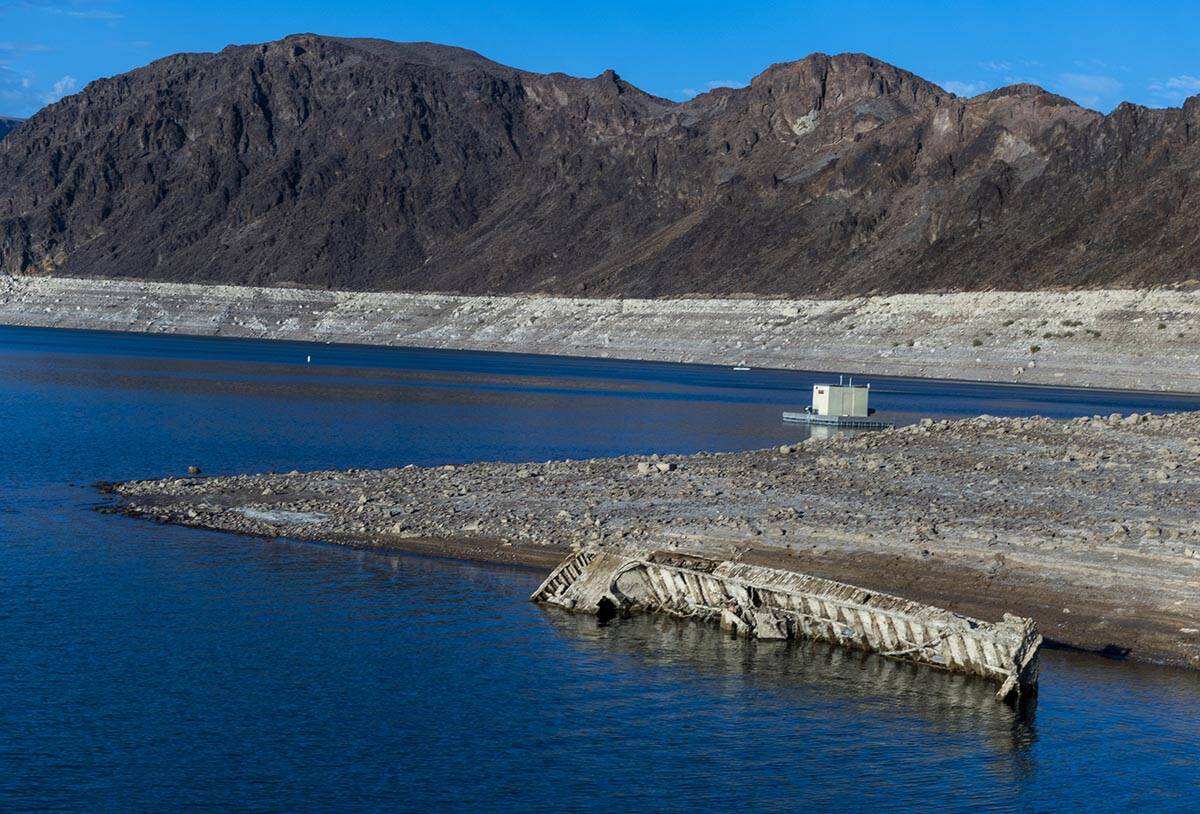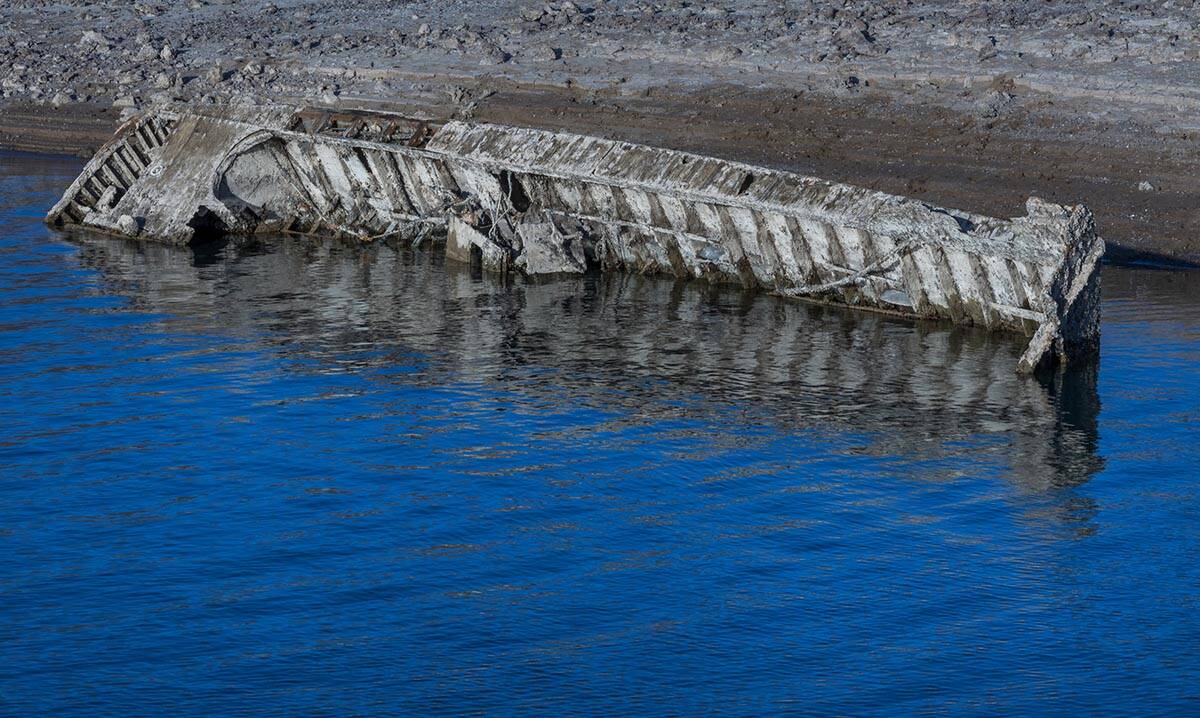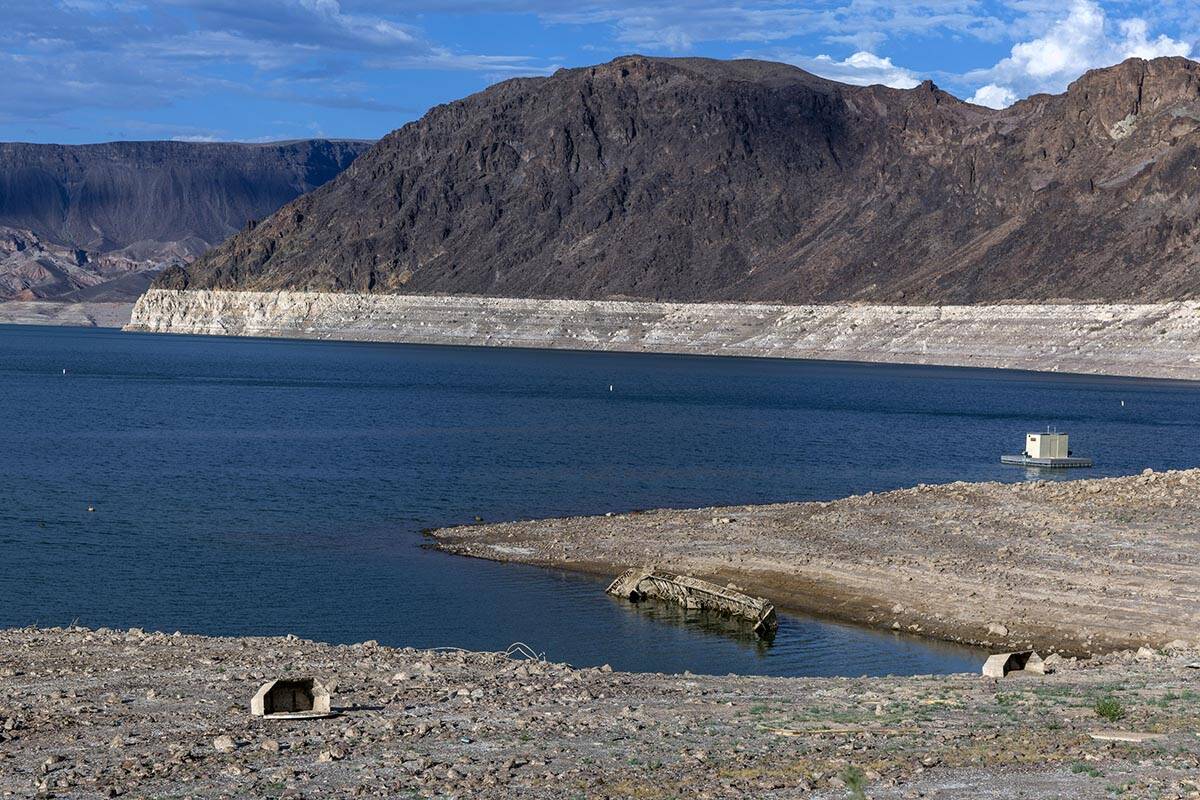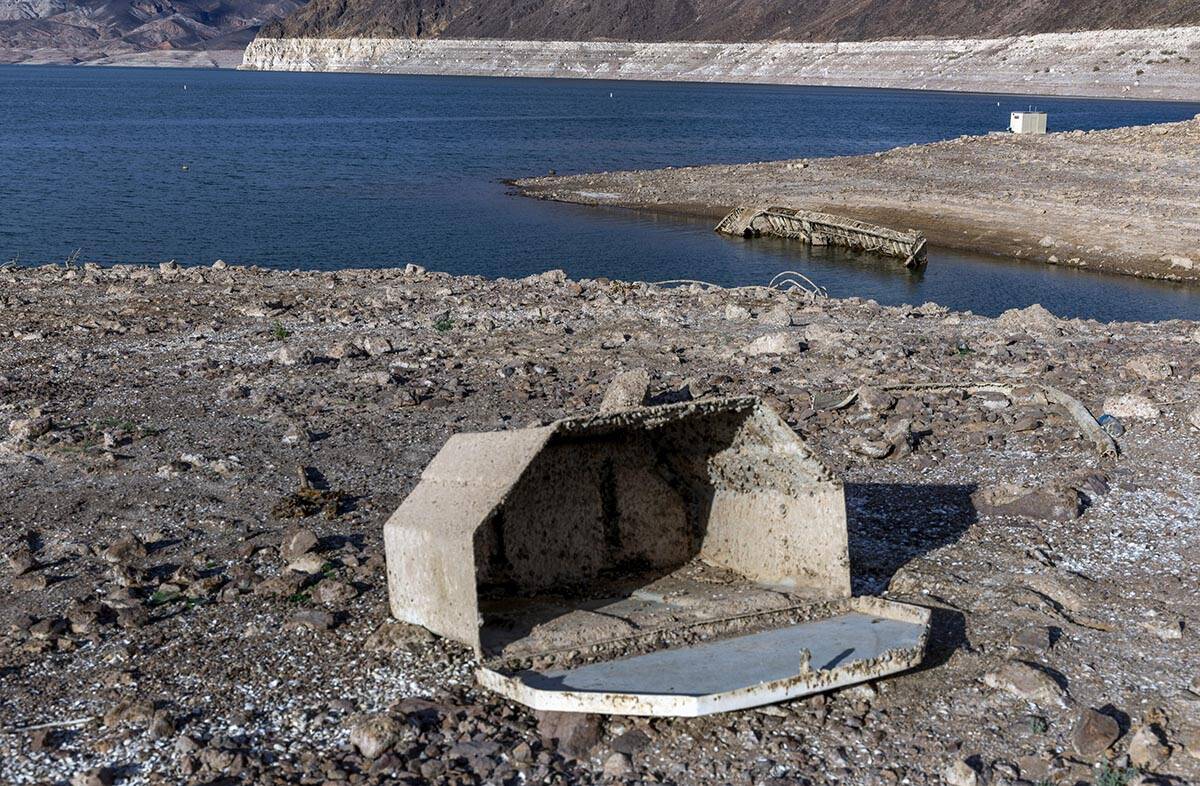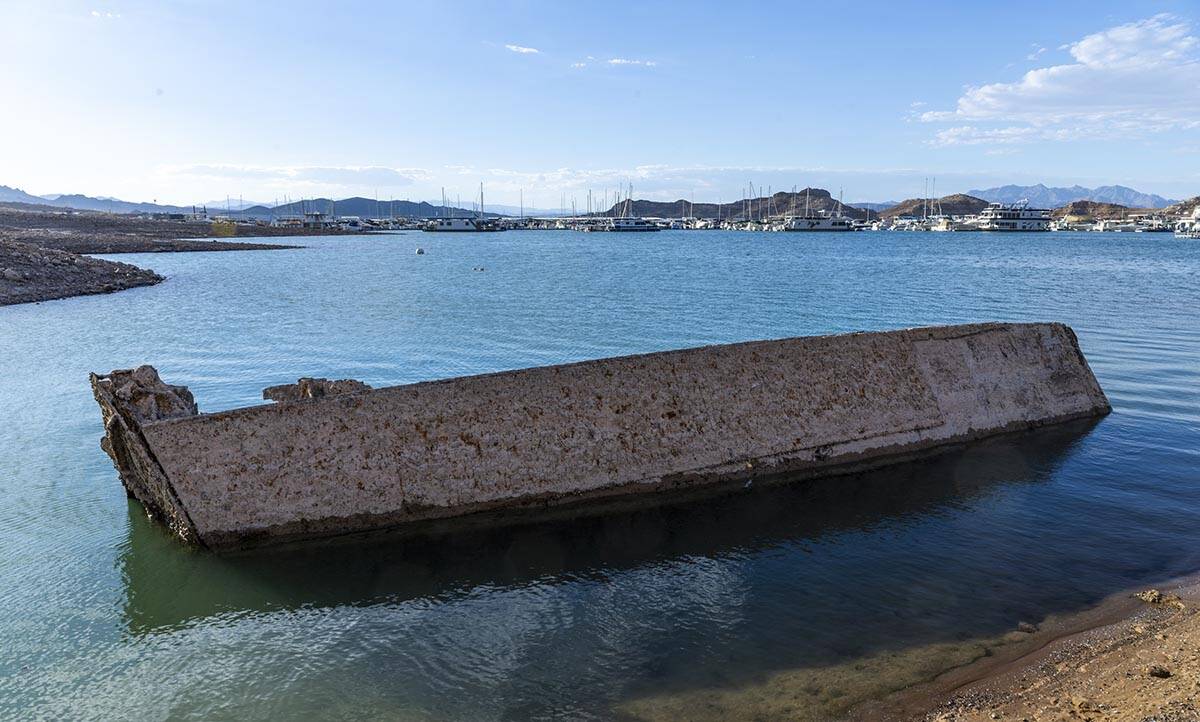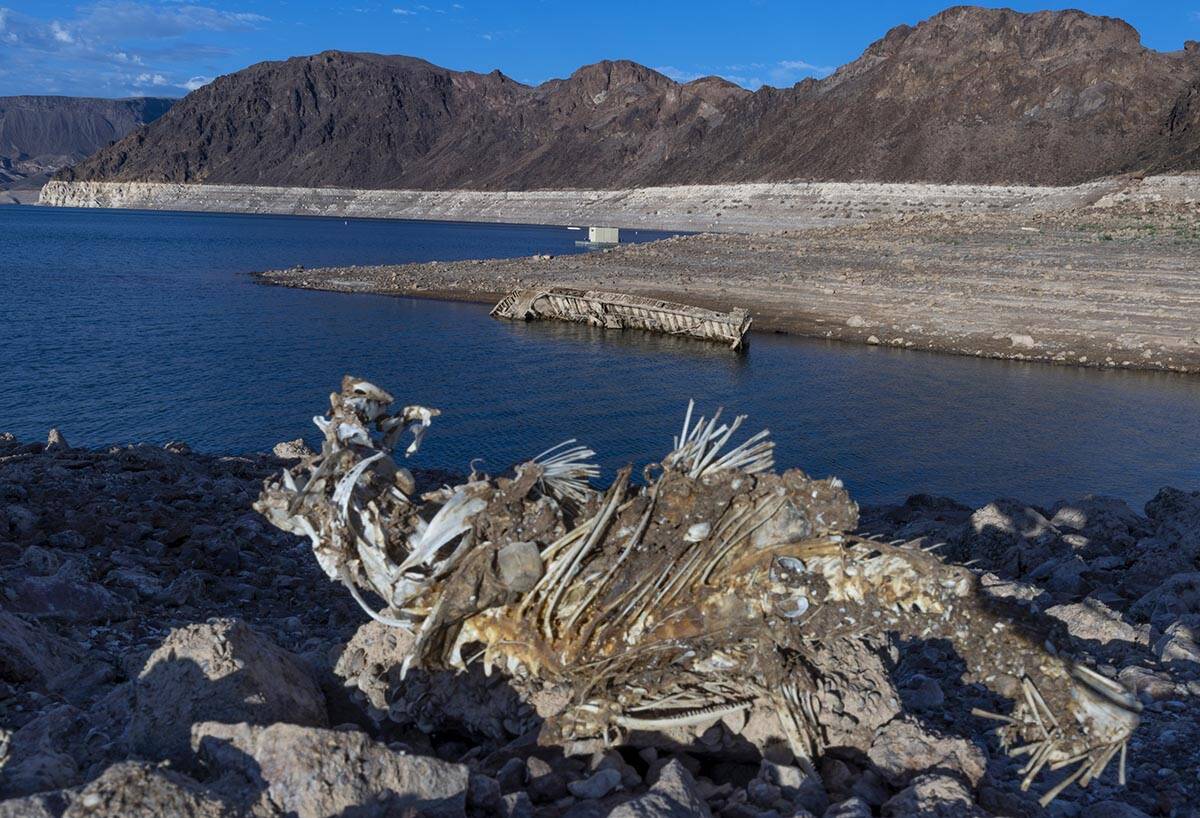Shrinking Lake Mead reveals World War II-era boat
A previously sunken World War II-era landing craft that once was 185 feet below the surface of Lake Mead, is being exposed as waters keep shrinking.
The Higgins landing craft is nearly two-thirds exposed. It is beached less than a mile from Lake Mead Marina and Hemenway Harbor.
The boat was used to survey the Colorado River decades ago, then was sold to a marina and eventually used as an anchor for a breakwater in the sediment, according to D.J. Jenner of Las Vegas Scuba, which conducts various tour dives on the lake, previously including the sunken boat.
National Park Service staffers began diving on the site in 2006, according to the Lake Mead National Recreation Area public affairs office. The plywood craft had its engine removed and also had modifications to open up the space between the two machine gun positions toward the stern.
“The surplus nature of the craft highlights an earlier era of the Lake when Las Vegas and Lake Mead were much more remote and removed from much of the United States, where relatively inexpensive WWII surplus could be pressed into duty for new peaceful purposes in the park,” NPS officials said in an email Friday. “The craft is still wrapped in a thin armor plate about 1/2 inch thick.”
Lake Mead’s water levels have declined over the past two decades as a persistent drought has strained the Colorado River, a vital water supply for roughly 40 million people. As of Friday afternoon, the water level at Lake Mead was at 1,043.05 feet above sea level. That is down 4.5 feet from a month ago, more than 25 feet from a year ago and 54 feet from two years ago.
And that is bringing long-sunken objects to the surface, including the Higgins landing craft and, earlier, a barrel with a body stuffed inside.
Higgins made two versions of the boat, one primarily made of plywood for landing soldiers and Marines in amphibious landings and a steel one for getting tanks or larger numbers of troops ashore, according to the National World War II Museum website.
“There are relatively few working or museum examples of the LCVP Higgins craft like the one currently emerging from Lake Mead,” the park service stated Friday. “As water levels continue to fluctuate and decline, we know that this boat may come to the attention of park visitors both new and returning. Lake Mead hopes everyone has the opportunity to learn more about its history and ask that as visitors enjoy the site, they leave it as they found it to avoid damaging the boat.”
“With two engines, the LCM (Landing Craft Mechanized) was capable of making 130-mile trips and could carry one 30-ton tank or 60 men fully loaded with gear,” notes the WWII museum website. “A heavy steel ramp allowed tanks to exit directly onto a beach. The design was modified during the war, with the boats getting larger to fit the changing needs of the U.S. Army and Marine Corps.”
Amazingly, workers at Higgins designed and crafted the first LCM in just 61 hours after previously creating a LCVP.
“As builders got to work cutting down the existing hull (from a LCVP), another team was locked in an office by Higgins and told they could leave only when they had worked out a solution for a ramp. The ramp design on the LCVP would not work, but within just half a day a solution was found and ready to implement. When the board arrived three days later, a 45-foot tank lighter was ready for their inspection. Higgins’ team had completed the vessel, including design and construction, in 61 hours. The board tested the boat, and promptly placed an order for 50 of Higgins’ design.” states the museum website.
RELATED
2 factors behind Lake Mead's slower rate of decline
REMEMBER WHEN: Lake Mead nears full capacity in June 1983 — PHOTOS
Nevada conserves Lake Mead, but big cuts to the river still may come — PHOTOS
Houseboat beached 3 weeks at Lake Mead rescued by YouTubers



